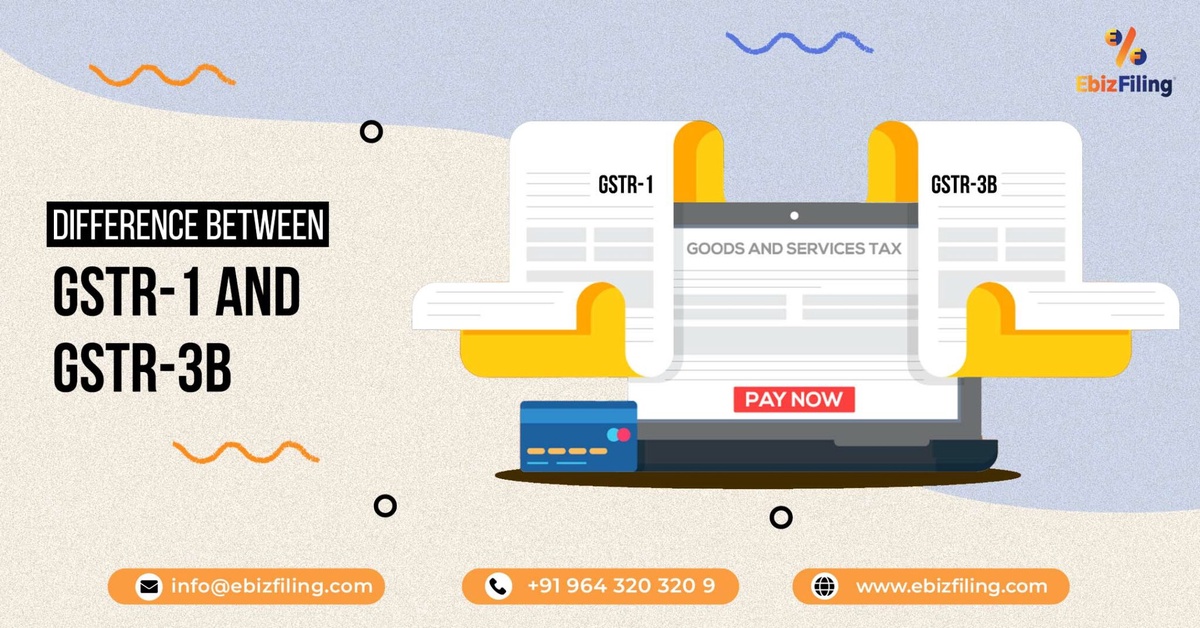Introduction
GST Returns must be filed on a monthly and quarterly basis by all registered dealers. In order to collect information from authorized dealers and transfer the ITC, the GST return filings are required. Each year, taxpayers file various forms of GST returns. The GSTR-1, which is filed for outgoing supplies, and the GSTR-3B, which is filed for both incoming and outgoing supplies, will be the two types of GST returns that we will be concentrating on in this article. We will also cover the distinctions between GSTR-1 and GSTR-3B in this article.
In India, filing a GST return is entirely done online. The GST filing service is a quick and simple process. To ensure that the GST credit can move on to the next phase, returns must be submitted accurately and without mistakes. To begin, all you need are your login credentials for the GST website. Once your GST registration has been completed, filing your GST return is required. Heavy penalties apply if the same is not filed. File your GST return on time and without error. Get the professionals at Ebizfiling to complete your GST return filing.
What is a GST return?
Your GST return will include information about a company’s sales, purchases, tax collected on sales (output tax), and tax paid on purchases (input tax). After submitting your GST returns, you must pay the government the money you owe them in taxes.
What separates GSTR 1 from GSTR 3B?
Let’s compare the GSTR 1 and GSTR 3B returns based on a number of factors.
-
GSTR 1 and GSTR 3B definitions
The information of all outbound supplies, or turnover, is included in the GSTR-1 report, which is submitted on a monthly or quarterly basis. Depending on the business turnover, it is decided whether to file monthly or quarterly.
However, the dealer submits GSTR-3B, a self-assessment report, in which they provide details about their purchases and expenses for both import and export products. The return has to be submitted each month despite the turnover.
-
The GSTR-1 and GSTR-3B filing dates
If a company’s yearly revenue exceeds Rs. 1.50 Crore, either in the previous year or the current year, GSTR-1 must be filed on a monthly basis. The eleventh day of the following month is the deadline for submitting the GSTR-1 for the current month. The taxpayer has the option to file GSTR-1 on a quarterly basis if the turnover is less than INR 1.50 crore. In this case, the 30th or 31st of the month after the previous quarter will be the deadline for submitting GSTR-1.
-
Tax payment of GSTR-1 & GSTR- 3B
There is no amount of tax to paid when filing a GSTR-1 return.
The GSTR-3B is only submitted, though, following the payment of the tax debt. If there is any delay in filing the return, the corporation is subject to a penalty.
-
GSTR-1 and GSTR-3B late filing and non-filing penalties
A corporation must pay a penalty of INR 200 per day (INR 100 for SGST and CGST) if it submits GSTR-1 after the deadline.
However, if a corporation submits GSTR-3B beyond the deadline, there will be a penalty of INR 20 per day for a nil return and INR 50 per day for the addition of transaction details.
-
The information required for GSTR-1 and GSTR-3B returns
Details on sales (both business-to-business and consumer-to-business), exempt supplies, exports of goods and services, or both, and turnover are all included in the invoice that is attached to the GSTR-1 return. a summary of the supplies made throughout the reporting period, along with information on account receivables and payback.
The GSTR-3B return specifies the taxable value, CGST, SGST, and IGST for the month for which the return is being filed, as well as information about turnover, exempt suppliers, export of goods or services, or perhaps both. Details on the inward supply that are relevant to the reverse charge as well as the total amount of the eligible input tax credit for the month.
Conclusion
Every taxpayer needs to be aware of the information and data they must include in Forms GSTR-1 and GSTR-3B, as well as their respective due dates, penalties for late filing, etc. With this information, the business can ensure that there are no gaps or mistakes that could lead to a demand notice from the tax authorities or other issues, and it can also avoid the improper filing of returns.


No comments yet